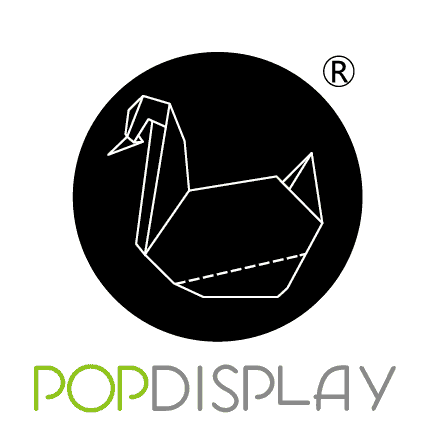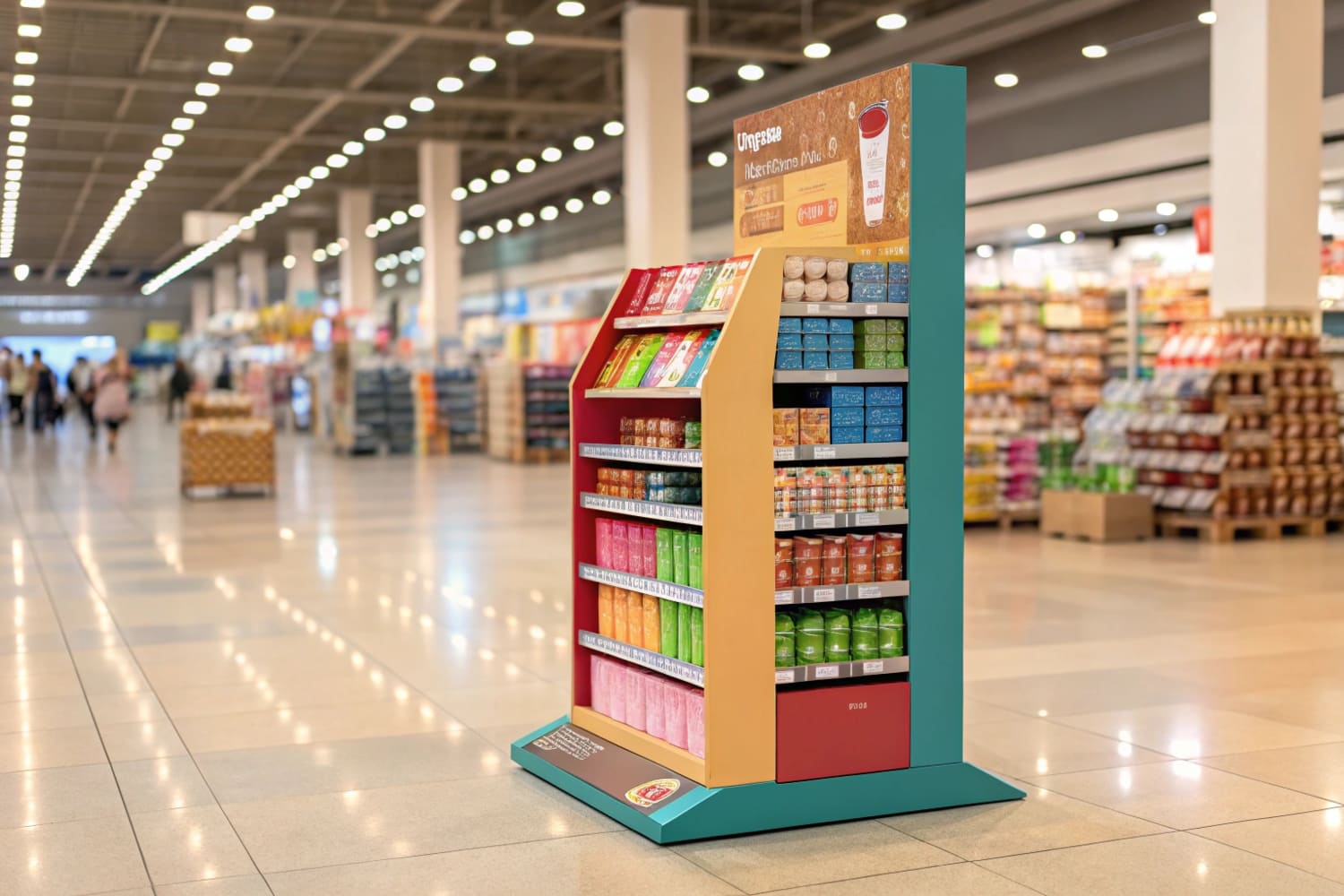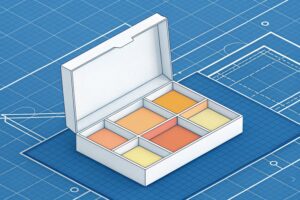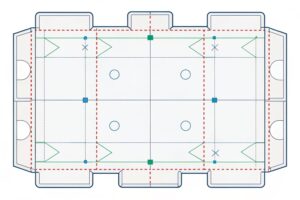Shoppers decide fast. My clients ask which display wins near the register or in the aisle. I explain it in simple words, with real project notes.
POP covers in-aisle, endcap, and floorstand displays that shape choice across the store; POS sits at checkout and triggers last-minute buys. Location matters most: POP persuades, POS converts.
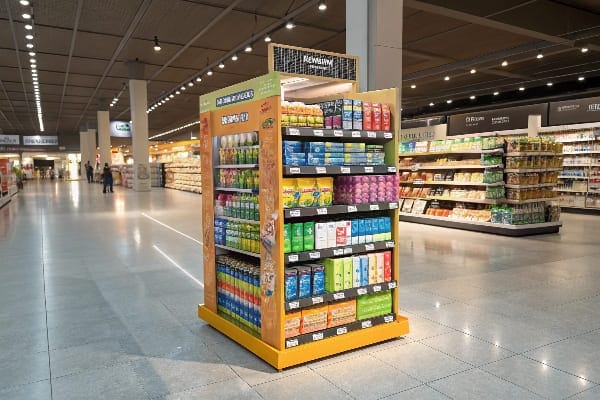
I design cardboard displays for global brands. I will map each term, show quick checklists, and share common traps. You will leave with a clear plan.
What is POS display?
A POS display lives at checkout. It fights for attention while the shopper pays. Space is small. Timing is tight. The build must be quick and sturdy.
A POS display is a checkout-area unit that prompts impulse purchases, holds small items, and speeds decisions; it fits limited space, assembles fast, and withstands heavy touch.
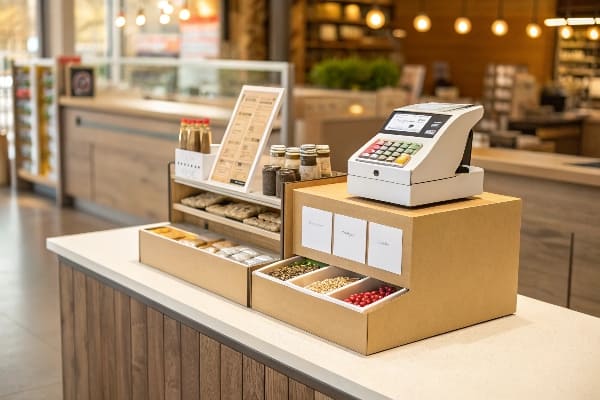
Typical placements
I place POS units1 where the line forms or where payment happens. Think counter risers, side-wing trays, and clip strips near card readers. Staff move these often, so light weight helps. Cardboard works because it ships flat and locks together without tools. I keep copy short, one benefit, one price, one call to action. I test the footprint with store staff before rollout. A short pilot avoids surprises.
| Placement | Why it works | Cardboard tip |
|---|---|---|
| Counter riser2 | Eye-level at pay moment | Use scratch-resistant top |
| Side-wing tray | Uses dead space beside register | Add hidden weight at base |
| Clip strip3 | Catches line-wait scanning | Reinforce hang holes |
Design checklist
I use bold price, tiny SKU count, and fast reach. I add moisture-safe coating4 for coffee zones. I print QR codes5 only if scanning is allowed. I pre-tape folds to cut store setup under two minutes. In one grocery launch, these steps lifted add-on units by double digits with no staff training time.
What is pop and POSM?
My team hears these terms mixed. I keep them simple. POP means in-store displays that influence buying. POSM means the wider set of in-store marketing tools.
POP refers to display units near products across the store; POSM (Point of Sale Materials) is the full kit of in-store tools like posters, shelf talkers, danglers, floor graphics, and displays; POP is one part of POSM.
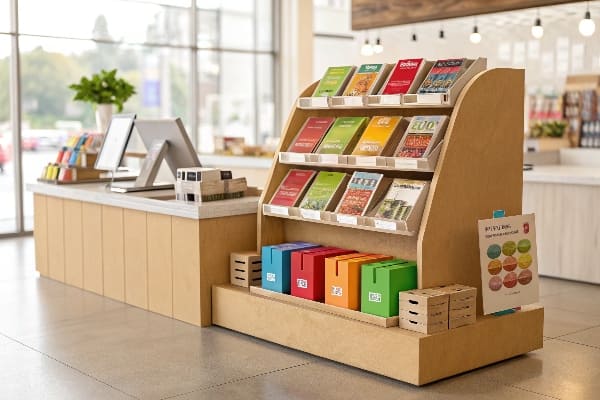
POP6 vs POSM7 scope
I treat POP as the hardware that holds or frames product. I treat POSM as everything that supports the story. This model keeps briefs clean. It also fits global teams. In North America, the retail network is mature, so standards are strict. In Asia-Pacific, growth is fast, and brands test new formats often. Digital printing now makes small runs and hyper-local art easy.
| Term | Scope focus | Examples |
|---|---|---|
| POP | Product-adjacent displays8 | Floorstands, pallets, shelf trays, endcaps |
| POSM | All in-store aids9 | Posters, wobblers, talkers, stickers, POP |
Why the distinction matters
Budgets stretch further when I split POP hardware10 from POSM layers. I can reuse a floorstand and refresh only graphics. This reduces waste and cost. It also speeds approvals in Europe, where sustainability rules are tighter. When I plan launches, I build a POSM matrix11 by market, then attach POP formats. The result is clear, scalable, and on time.
What are the pros and cons of pop displays?
Every buyer asks for impact and cost control. POP displays deliver both. They also bring risks. I list the real tradeoffs from projects in North America, Europe, and Asia.
Pros: cost-effective, fast to produce, flexible, highly customizable, recyclable, and strong visual impact; cons: lower long-term durability, moisture sensitivity, assembly errors, shipping damage, and raw-material price swings.
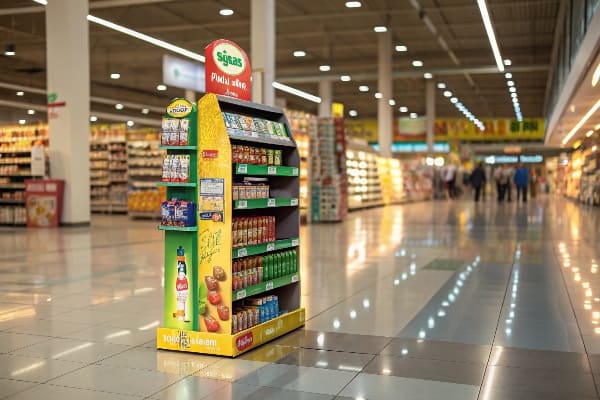
Benefits that move sales
Cardboard POP12 is budget-friendly. It prints rich colors. It folds flat, so freight is low. Digital printing enables fast artwork changes and short runs. One report puts floor displays13 near half of POP share, and I see why: a bold floorstand stops traffic. In APAC, rapid retail growth and a large packaging base push adoption. In Europe, recyclable board and water-based inks help meet rules. My hunting-gear client once tested a shelf tray versus a floorstand. The floorstand won because bows need vertical storytelling.
| Pro | Why it helps | How I maximize it |
|---|---|---|
| Cost-effective14 | Lower material and freight | Flat-pack, nested parts |
| Fast lead time | Quick promotions | Digital print, modular dielines |
| Customizable | Fits many SKUs | Swappable headers and shelves |
| Sustainable15 | Recyclable substrates | FSC board, water-based inks |
Risks and fixes
Durability drops in wet zones. I add nano-coatings16 for splash areas. Assembly errors hurt lift. I print step-by-step icons and add tear-off jigs. Transit damage ruins rollouts. I use corner guards17 and ship tests. Pulp prices swing. I lock paper buys early and design for lighter calipers without losing strength. Tariffs and fuel can raise costs; I model scenarios and keep backup board specs. These habits keep programs stable.
What is the difference between POS and PoA in sales?
Many sales decks show PoA beside POS. I view them as stages. PoA grabs attention early. POS closes the deal near payment.
PoA (Point of Attention/Attraction) builds awareness and interest across or outside the store; POS (Point of Sale) converts near checkout; PoA creates intent while POS secures the transaction.

Funnel mapping
I map store journeys like a simple funnel. PoA18 sits at entrances, windows, and main aisles. It includes big headers, motion, or AR hooks. POS19 sits at the payment zone. It includes trays, rails, and small risers. I measure PoA by stops, views, and time spent. I measure POS by units per ticket and attach-rate.
| Stage | Asset type | Key metric20 |
|---|---|---|
| PoA | Banners, windows, arch21 | Stops, dwell, reach |
| POP | Endcaps, floorstands | Pick-up rate, trials |
| POS | Counter trays, clipstrips | Attach-rate, UPT |
Design shifts from PoA to POS
PoA can use larger footprints and brand stories. POS must be tiny and clear. I move from benefit-led PoA lines to crisp POS price flashes. Colors stay consistent to maintain recognition. If your team uses PoA to mean “Point of Acquisition22,” the idea stays similar: it is a pre-checkout capture point23. The naming may shift by company, but the job stays the same.
What is a point of purchase pop display?
This term repeats itself, so it confuses teams. I use it for any display at the buying decision, not at the register.
A point-of-purchase POP display is an in-aisle or endcap unit placed where decisions happen, such as floorstands, pallet displays, or shelf trays, usually next to the product.
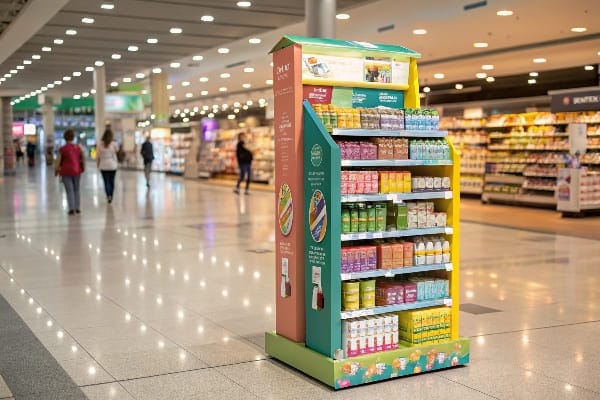
Common formats and when I pick them
I choose the format by SKU size, store rules, and speed. Floor POP displays24 keep growing because they hit hard visually and hold stock. Countertop pieces fit small add-ons. Pallet displays are best for warehouse clubs. Shelf trays improve facing control and reduce restock time. In APAC, fast retail expansion supports all four types. In Europe, recyclable board and light designs win. In one launch for hunting bows, my client needed a tall story panel and strong hooks. We built a modular floorstand25 with reinforced hang bars and a lockable base. The setup time dropped to five minutes.
| Format | Best use case | Strength tip |
|---|---|---|
| Floorstand26 | New lines, big stories | Double-wall core at spine |
| Countertop27 | Small, high-margin items | Anti-slip feet |
| Pallet display | Club stores and promos | Corner-post protectors |
| Shelf tray | Facings and quick restock | Die-cut thumb push-holes |
What is point of purchasing pop?
People sometimes write “point of purchasing POP.” It sounds odd. It still means a POP unit near the buying moment.
“Point of purchasing POP” is another way to say POP at the decision zone; treat it as standard POP and focus on placement, clear message, sturdy build, and fast assembly.
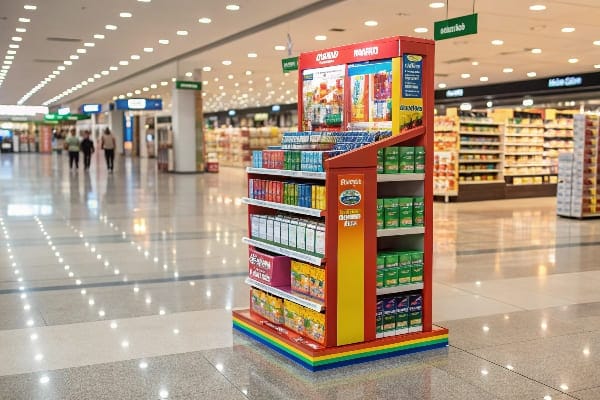
Practical build rules I follow
I keep structure simple. I cap parts to avoid store errors. I use water-based inks28 and FSC board29 to meet sustainability goals. I run load and transport tests before sign-off. I create 3D renders for quick feedback, then a physical sample. I allow free artwork tweaks until fit and color pass. I lock certifications early because some buyers check them carefully. I include QR for tutorials only if the store allows phones on the floor. For color, I print a master chart and match it in mass production.
| Rule | Why it matters | Tool I use |
|---|---|---|
| Flat-pack design30 | Lower freight, faster set | Modular dielines |
| Clear instructions | Fewer store errors | Pictogram assembly card |
| Strength testing31 | Zero collapse in field | Load/transport test rigs |
| Color control | Brand consistency | Printed master swatches |
| Proof and prototype | Catch issues early | 3D render + sample |
Conclusion
POP persuades in the aisle. POS converts at checkout. Use the right format, clear copy, and sturdy board. Test early. Ship flat. Measure lift and keep improving.
Explore this link to learn effective strategies for optimizing POS unit placements to boost sales. ↩
Explore how counter risers can enhance visibility and sales at checkout. ↩
Learn about the advantages of clip strips in capturing customer attention while they wait. ↩
Explore this link to understand how moisture-safe coatings enhance product longevity and quality, especially for coffee. ↩
Discover how QR codes can boost customer interaction and sales in retail environments, making your strategy more effective. ↩
Understanding the distinction between POP and POSM can enhance your marketing strategies and improve product presentation. ↩
Exploring how POSM contributes to brand storytelling can provide insights into effective marketing and consumer engagement. ↩
Understanding product-adjacent displays can enhance your marketing strategy and improve in-store visibility. ↩
Exploring in-store aids can help you optimize customer engagement and boost sales effectively. ↩
Understanding POP hardware can enhance your marketing strategies and improve budget efficiency. ↩
Learning about a POSM matrix can help streamline your marketing efforts and ensure timely launches. ↩
Explore this link to understand how Cardboard POP can enhance your retail strategy and boost sales. ↩
Discover insights on the effectiveness of floor displays in attracting customers and increasing sales. ↩
Explore this link to understand how cost-effective packaging can save money and improve efficiency. ↩
Discover the importance of sustainable packaging and its positive effects on the environment. ↩
Explore how nano-coatings enhance durability and performance in various applications. ↩
Learn about the effectiveness of corner guards in protecting products during shipping. ↩
Understanding PoA can enhance your retail strategies by optimizing customer engagement and journey mapping. ↩
Exploring POS systems can help you improve sales efficiency and customer experience at the payment zone. ↩
Understanding key metrics can enhance your marketing strategy and improve asset performance. ↩
Explore the effectiveness of these advertising assets to optimize your marketing campaigns. ↩
Understanding Point of Acquisition can enhance your marketing strategies and improve customer engagement. ↩
Exploring pre-checkout capture points can help optimize your sales funnel and increase conversion rates. ↩
Explore how Floor POP displays can enhance visual appeal and stock management in retail environments. ↩
Learn about designing modular floorstands to optimize space and improve product visibility in stores. ↩
Explore the advantages of Floorstand displays for showcasing large stories and new lines effectively. ↩
Learn how Countertop displays can enhance visibility and sales for high-margin items in retail. ↩
Explore this link to understand how water-based inks contribute to sustainability and quality in printing. ↩
Learn about FSC board and its role in promoting responsible forestry and environmental sustainability. ↩
Explore how flat-pack design can significantly reduce shipping costs and improve efficiency. ↩
Learn about the critical role of strength testing in ensuring product safety and reliability. ↩
